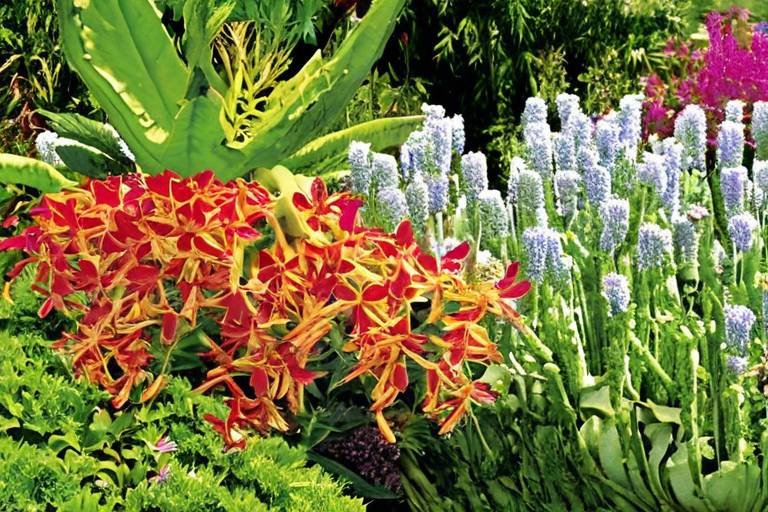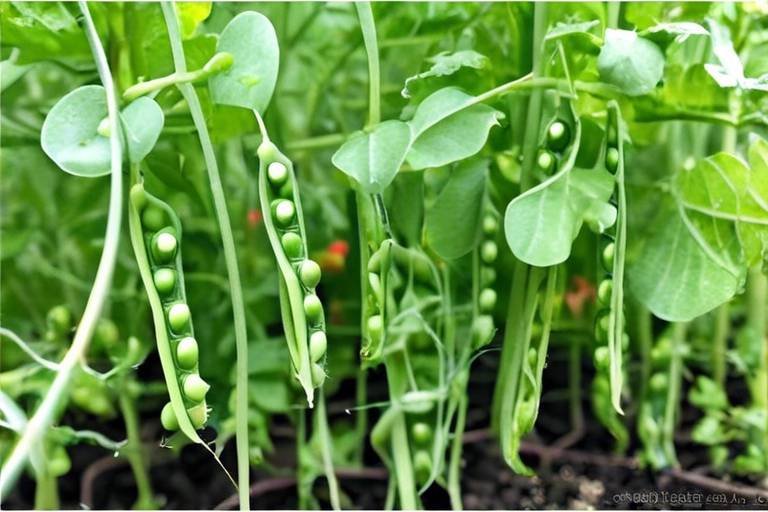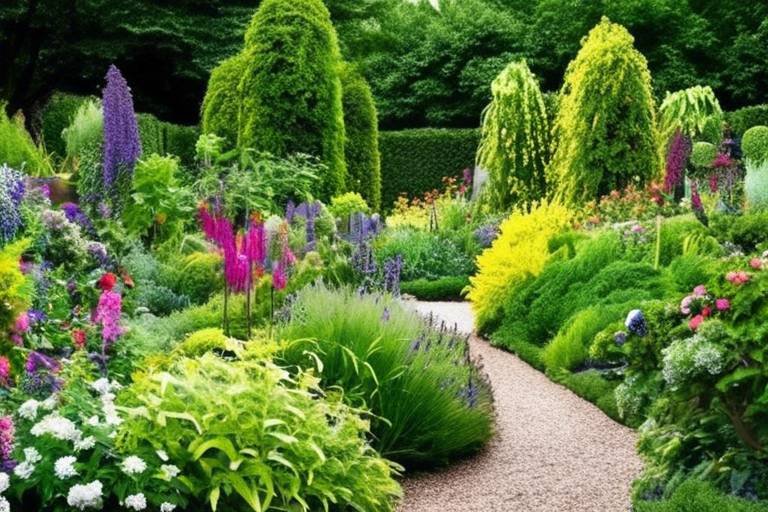Best Plants for Creating a Pet-Friendly Outdoor Space
Creating a pet-friendly outdoor space is a wonderful way to provide your furry companions with a safe and enjoyable environment to explore and play in. When selecting plants for your outdoor area, it's essential to choose pet-safe plants that are non-toxic and harmless for your pets to be around. These plants should not pose a threat if your curious pet decides to take a nibble.
Opting for low-maintenance greenery is also a smart choice when designing your pet-friendly outdoor space. Plants that require minimal care and are resilient to pet interactions will ensure that your garden remains lush and vibrant without demanding too much attention.
For a more engaging outdoor experience, consider incorporating interactive plant ideas that provide sensory stimulation for your pets. Plants that rustle in the breeze, have interesting textures, or produce enticing scents can encourage playfulness and curiosity in your furry friends.
While selecting plants, it's crucial to be aware of plants to avoid that are toxic to pets. Common plants like lilies, daffodils, and azaleas can be harmful if ingested by pets and should be kept out of reach in your outdoor area.
In addition to decorative plants, consider growing pet-friendly herbs that offer health benefits to your pets. Herbs like catnip, parsley, and mint not only add greenery to your garden but also provide natural remedies and flavors that can benefit your pet's well-being.
Designing a pet-friendly garden involves creating a harmonious balance between your plants and pets. Tips such as providing shaded areas, incorporating pet-friendly pathways, and creating designated play zones can enhance the outdoor experience for both you and your furry companions.
When planting your greenery, it's essential to consider pet safety by strategically placing plants away from toxic substances, ensuring secure fencing to prevent escape, and using pet-friendly fertilizers and pesticides to maintain a healthy environment for your pets.
For those looking to get creative, DIY pet-friendly plant projects can add a personalized touch to your outdoor space. From crafting cat grass gardens to designing dog-friendly play areas, these projects can be both fun to create and enjoyable for your pets to interact with.

Pet-Safe Plants Selection
When it comes to creating a pet-friendly outdoor space, selecting pet-safe plants is crucial. These plants are not only visually appealing but also safe for your furry friends to be around, even if they decide to take a curious nibble. Choosing non-toxic plants ensures that your pets can enjoy the outdoor area without the risk of ingesting harmful substances.
One popular choice for pet-safe plants is the Spider Plant (Chlorophytum comosum), known for its air-purifying qualities and safe nature for cats and dogs. The vibrant African Violet (Saintpaulia) is another excellent option, adding a splash of color to your garden while being non-toxic to pets.
For those looking to incorporate greenery that is both pet-safe and visually appealing, the Areca Palm (Dypsis lutescens) is a great choice. This palm variety is safe for pets and adds a tropical touch to your outdoor space.
When selecting pet-safe plants, it's essential to consider not only the safety of your pets but also the ease of maintenance. Plants like Bamboo Palm (Chamaedorea seifrizii) and Money Plant (Epipremnum aureum) are not only safe for pets but also relatively low-maintenance, making them ideal choices for a pet-friendly garden.
Creating a harmonious outdoor environment where pets can roam freely and plants can thrive is possible with careful selection of pet-safe plants. By incorporating these green companions into your outdoor space, you can ensure a safe and enjoyable environment for both your pets and your plants.

Low-Maintenance Greenery
When it comes to creating a pet-friendly outdoor space, incorporating low-maintenance greenery can be a game-changer. These plants not only add beauty to your garden but also require minimal effort to care for, making them ideal for pet owners with busy schedules or those looking for hassle-free gardening options.
One excellent choice for low-maintenance greenery is the Snake Plant, also known as Sansevieria. This hardy plant thrives in various light conditions and is incredibly resilient to pet interactions. Its upright, sword-shaped leaves add a touch of elegance to any outdoor space while being safe for pets to be around.
Another great option is the Spider Plant, scientifically known as Chlorophytum comosum. This plant is not only safe for pets but also acts as a natural air purifier, enhancing the air quality in your outdoor area. With its cascading foliage and easy propagation, the Spider Plant is a low-maintenance favorite among pet owners.
For a pop of color and minimal care requirements, consider adding Zinnias to your outdoor garden. These vibrant annual flowers come in a variety of hues and are known for their resilience to heat and drought. Zinnias attract butterflies and hummingbirds, adding a touch of wildlife to your pet-friendly outdoor space.
When selecting low-maintenance greenery, opt for plants that are sturdy, adaptable to different growing conditions, and pet-safe. By choosing plants that require minimal attention, you can enjoy a lush and vibrant garden without compromising on the well-being of your beloved pets.

Interactive Plant Ideas
When it comes to creating a pet-friendly outdoor space, incorporating interactive plant ideas can enhance the overall experience for both pets and their owners. Interactive plants not only add visual appeal to the garden but also provide sensory stimulation for pets, encouraging playfulness and engagement in the outdoor environment.
One interactive plant idea that pet owners can consider is the Catnip plant. Catnip, also known as Nepeta cataria, is a herb that is well-loved by many cats due to its enticing scent. Planting Catnip in the outdoor space can attract cats and stimulate their senses, offering them a source of entertainment and enrichment.
Another engaging plant option is the Cat Grass. Cat Grass, such as wheatgrass or oat grass, is safe for pets to nibble on and provides essential nutrients for their digestion. Growing Cat Grass in designated areas can divert pets' attention from other plants and encourage healthy grazing behavior.
For dog owners, incorporating interactive plants like the Mint plant can be a great idea. Mint plants, with their refreshing aroma, can create a sensory experience for dogs, enticing them to explore and interact with the garden. Additionally, Mint plants can also serve as natural insect repellents, benefiting both pets and the outdoor space.
Creating a designated digging area with interactive plants like Lemongrass can also engage pets in a positive way. Lemongrass, with its citrusy scent, can attract pets to the designated area, encouraging them to dig and play without causing damage to other parts of the garden. This interactive plant idea helps channel pets' natural behaviors in a controlled and beneficial manner.

Plants to Avoid
When creating a pet-friendly outdoor space, it's crucial to be aware of plants that can be harmful to our beloved furry friends. Some common plants, while aesthetically pleasing, can pose a threat to pets if ingested or even just through contact. It's essential to identify and avoid these plants to ensure the safety and well-being of our pets.
One plant to steer clear of is lilies. These elegant flowers are highly toxic to cats, even in small amounts. Ingesting any part of the lily plant, including the petals, leaves, or pollen, can lead to severe kidney damage and potentially be fatal to felines. Therefore, it's best to keep lilies out of your outdoor space if you have cats roaming around.
Another plant that should be avoided is azaleas. These colorful shrubs contain toxins that can be harmful to both cats and dogs if ingested. Symptoms of azalea poisoning include vomiting, diarrhea, and even more severe reactions in some cases. To prevent any accidental ingestion, it's advisable to opt for pet-safe alternatives in your garden.
Sago palms are also on the list of plants to avoid. While they may add a tropical touch to your outdoor area, all parts of the sago palm are toxic to pets, especially dogs. Ingesting even a small amount of this plant can lead to symptoms such as vomiting, diarrhea, liver failure, and, in severe cases, death. It's best to opt for pet-friendly plants that don't pose such risks.
Additionally, oleander is a plant that should be kept away from pets. This flowering shrub contains cardiac glycosides that can be extremely toxic to animals if consumed. Ingestion of oleander can cause symptoms like drooling, abdominal pain, and in severe cases, heart abnormalities. To ensure the safety of your pets, it's wise to avoid planting oleander in your outdoor space.

Herbs for Pets
When it comes to creating a pet-friendly outdoor space, incorporating herbs that are safe and beneficial for pets can be a wonderful addition. Not only do these herbs add a touch of greenery and fragrance to your garden, but they can also serve as natural remedies for common pet ailments. Choosing the right herbs for your furry friends can enhance their well-being and create a harmonious environment for both pets and plants.
One popular herb that is safe for pets is catnip. Catnip is known for its stimulating effects on cats, often inducing playful behavior and relaxation. You can easily grow catnip in your outdoor space and watch your feline friend enjoy its aromatic leaves. Just be prepared for some entertaining antics as your cat interacts with this herb.
Mint is another pet-friendly herb that can be a great addition to your garden. Not only does mint have a refreshing scent, but it also has natural insect-repellent properties. Dogs, in particular, may enjoy the taste of mint leaves and benefit from its digestive properties. Mint is easy to grow and can thrive in various outdoor conditions, making it a versatile choice for pet owners.
For pet owners looking to promote relaxation and calmness in their furry companions, lavender is an excellent herb to consider. Lavender has a soothing aroma that can help reduce stress and anxiety in pets. Planting lavender in your outdoor space can create a serene atmosphere for both you and your pets to enjoy. Additionally, lavender is known for its insect-repellent properties, making it a practical and pet-safe herb to have in your garden.
Another herb that offers health benefits for pets is chamomile. Chamomile is well-known for its calming effects and can be beneficial for pets experiencing anxiety or digestive issues. You can brew chamomile tea using fresh chamomile flowers to create a natural remedy for your pets. Growing chamomile in your outdoor space not only adds beauty to your garden but also provides a valuable herb for promoting your pet's well-being.
Incorporating pet-friendly herbs into your outdoor space not only enhances the aesthetic appeal of your garden but also contributes to the overall health and happiness of your pets. By selecting herbs that are safe and beneficial for your furry friends, you can create a pet-friendly environment that nurtures both your plants and your beloved companions.

Creating a Pet-Friendly Garden Design
Creating a pet-friendly garden design involves thoughtful planning and consideration to ensure a harmonious outdoor space for both your beloved pets and your greenery. One key aspect to keep in mind is to designate specific areas for your pets to play and roam freely while also creating safe zones for your plants to thrive undisturbed. By incorporating pet-friendly elements into your garden design, you can create a space that caters to the needs of both your furry friends and your botanical companions.

Planting for Pet Safety
When it comes to creating a pet-friendly outdoor space, ensuring the safety of our beloved companions is paramount. Planting for pet safety involves strategic considerations to prevent any potential harm to our furry friends. By selecting the right plants and arranging them thoughtfully, we can cultivate a harmonious environment that promotes both plant growth and pet well-being.
One essential aspect of planting for pet safety is to be aware of the toxicity levels of various plants. While some plants are harmless, others can pose a danger to pets if ingested. It's crucial to research and choose non-toxic plant varieties that are safe for pets to be around. This proactive approach can prevent accidental ingestion and keep our pets out of harm's way.
Furthermore, the placement of plants plays a significant role in ensuring pet safety. Avoiding planting toxic plants within reach of curious pets is key. Placing barriers or creating designated pet-free zones can help prevent unwanted interactions with potentially harmful greenery. By strategically arranging plants, we can create a safe and enjoyable outdoor space for both pets and plant life.
Consider incorporating raised plant beds or hanging planters to elevate plants out of pets' reach. This not only adds a decorative element to the outdoor space but also serves a practical purpose in safeguarding pets from toxic plants. Creating physical boundaries between pets and plants can prevent unwanted nibbling or digging, reducing the risk of accidental ingestion.
Another aspect to consider when planting for pet safety is the choice of fertilizers and pesticides. Opt for pet-safe and organic products to maintain plant health without posing a threat to pets. By prioritizing pet-friendly gardening practices, we can ensure a safe and sustainable outdoor environment for our furry companions to enjoy.

DIY Pet-Friendly Plant Projects
When it comes to creating a pet-friendly outdoor space, DIY pet-friendly plant projects can add a fun and interactive element to your garden. These projects not only enhance the aesthetics of your outdoor area but also provide enrichment for your pets. One popular project is creating a cat grass garden, which allows your feline friends to nibble on fresh grass that aids in their digestion. This simple project can be set up in a designated area using cat-friendly grass seeds and a shallow container.
For dog owners, a dog-friendly play area can be a fantastic addition to the outdoor space. You can create a digging pit filled with pet-safe sand or soil where your dog can dig and play freely. Adding pet-friendly plants like lavender or chamomile around the play area can also provide a calming atmosphere for your furry companion. Incorporating interactive elements such as agility equipment or treat-dispensing toys can further engage your pets in outdoor playtime.
If you have both cats and dogs, consider planting a variety of pet-safe herbs in raised garden beds. Herbs like catnip, mint, and parsley not only offer health benefits for your pets but also add a pleasant aroma to your garden. You can create a mini herb garden using recycled containers or wooden crates, allowing easy access for your pets to sniff and nibble on the herbs.
Another creative DIY project is building a vertical garden using pet-safe plants like spider plants or Boston ferns. Vertical gardens not only save space but also provide a safe way for pets to interact with plants without damaging them. You can use a wooden pallet or hanging planters to create a vertical garden that adds a touch of greenery to your outdoor space while keeping your pets entertained.
Frequently Asked Questions
- Are there any plants that are safe for pets to be around?
Yes, there are several pet-safe plants that are non-toxic and safe for pets to be around. Some examples include spider plants, Boston ferns, and African violets.
- What are some common plants that should be avoided in a pet-friendly outdoor space?
Plants such as lilies, tulips, and azaleas are toxic to pets and should be avoided in a pet-friendly outdoor area. It's important to research and ensure all plants are safe for pets before adding them to your garden.
- How can I design a garden that accommodates both my pets and plants?
To create a pet-friendly garden design, consider incorporating raised beds, pathways, and designated play areas for pets. Choose sturdy plants that can withstand pet interactions and avoid using any chemicals or fertilizers that may be harmful to animals.
- What are some DIY pet-friendly plant projects I can try?
You can create fun and interactive plant projects for your pets such as planting cat grass gardens, setting up a dog-friendly play area with pet-safe toys, or even building a small herb garden that benefits both you and your furry friends.



















